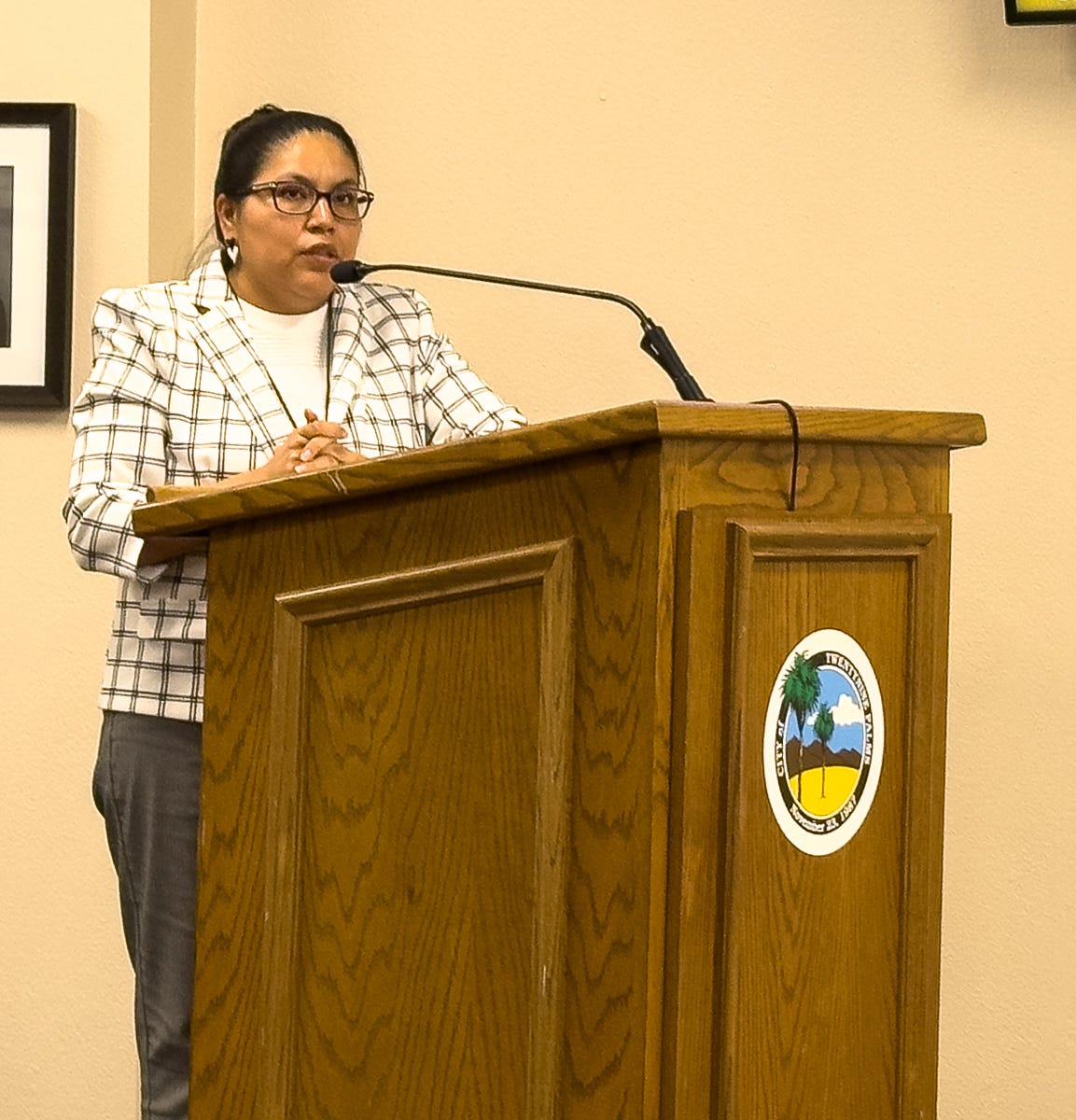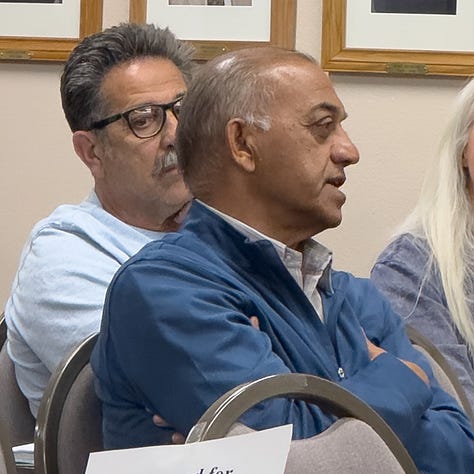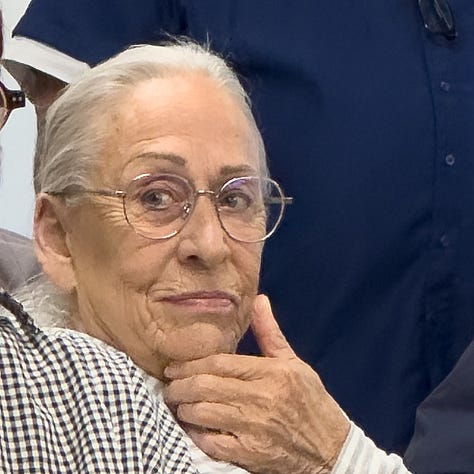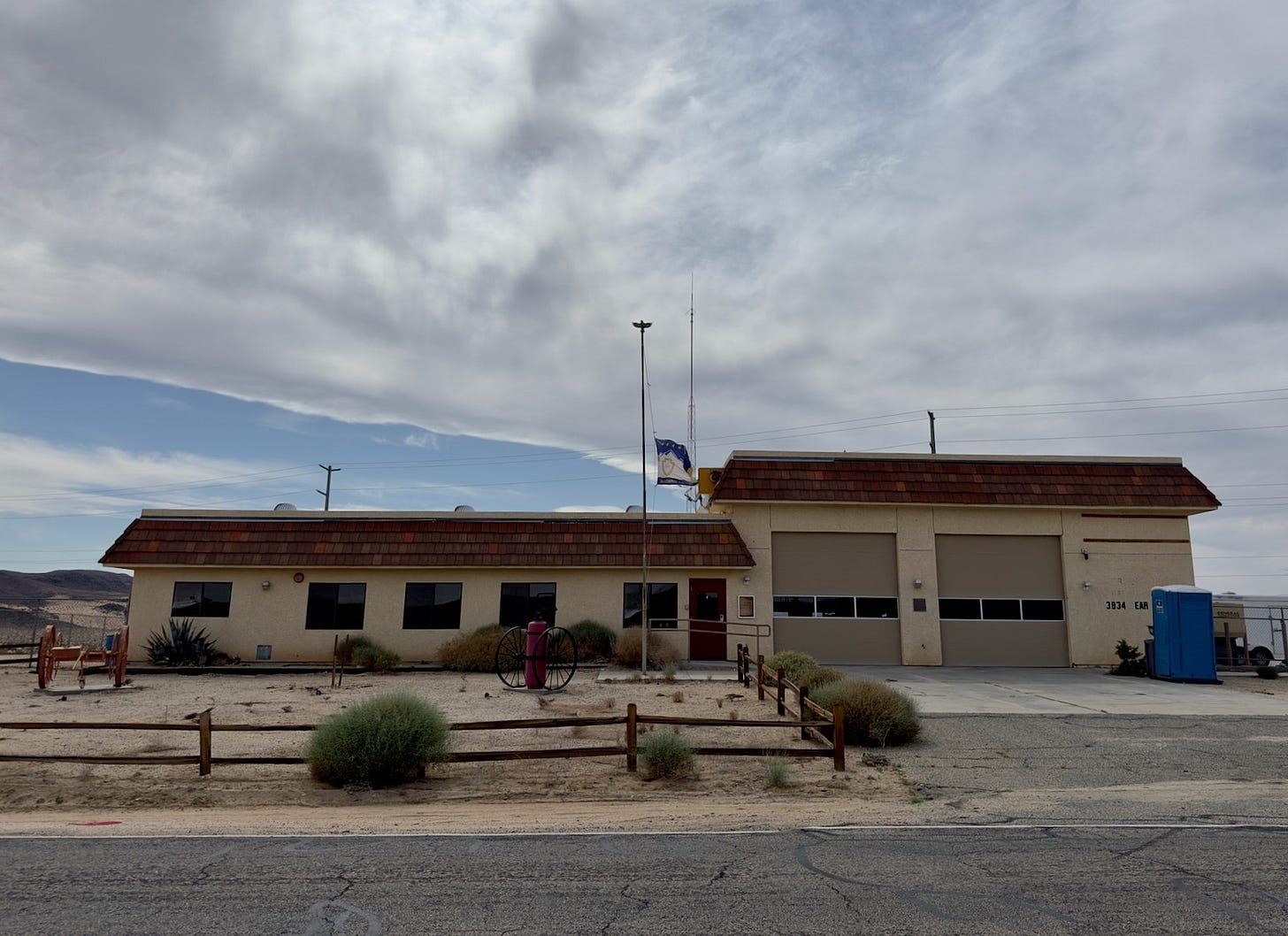RECAP: Twentynine Palms' Strategic Planning: Many Needs, Little Revenue, Part 3
City departments outline wish lists—Finance Director promptly squashes them

Although the City’s strategic planning process took place nearly a month ago, the Desert Trumpet thinks it is useful for Twentynine Palms residents to understand just what it is City government does and aspires to do. We have been working our way through the epic four-hour meeting that took place on Friday, April 4. This is the third part of our report, and there will be more to come.
Desert Trumpet views this session as a great resource. For that reason, we are going to list presenting departments alphabetically instead of following the order of the evening. The reporting below is based on the information supplied.
On Friday evening, 13 City departments and partners arrived with wish lists of improvements in hand, including $23 million to replace the City’s dilapidated animal shelter. But Finance Director Abigail Hernandez-Conde matter-of-factly crushed their hopes and the mood of the packed room.
Part 1, which recaps the presentations by Animal Shelter and Animal Control and the City Clerk’s office, is here.
Part 2 covered Community Development and Emergency Management here.
While there were several questions and some discussion between Councilmembers, presenters and residents, no microphone was provided to the public. We’ve done our best to capture those conversations. We are listing the names of the public and Councilmembers commenting, and quoting from selected comments.
Finance

Presenting: Abigail Hernandez-Conde, Finance Director/Treasurer
Purpose:
To manage the City’s financial resources effectively while ensuring fiscal accountability, sustainability, and reliable financial reporting. Responsibilities include complying with the adopted budget, accurate reporting, internal controls, accounts payable/receivable, payroll, and investment management.
Staffing:
Three full-time staff members:
Finance Director / City Treasurer
Two Finance Technicians (handle accounts payable and payroll)
Projects / Accomplishments:
Received Certificate of Achievement for Excellence in Financial Reporting for fiscal year (FY) 2022–23 from the Government Finance Officers Association; Ms. Henandez-Conde said the department expects to receive an FY 2023–24 award anticipated in May.
An audit by an independent accounting firm of the department’s FY 2023–24 budget had no findings and an unmodified opinion—which in the accounting world is a very good report.
The department is working on two-year budget for FY 2025–27.
Conducting a review of employee compensation plans with a focus on lowering administrative fees.
Hosted a 457(b) investment plan workshop for City employees.
Hernandez-Conde said that the Finance Department’s revenue projections are conservative amid the current economic uncertainty.1 The Transient Occupancy Tax (TOT)2 is flat at $1.9 million, and growth in property and sales taxes has been modest.
Expenditures rising faster than revenues—e.g., law enforcement contracts are projected to increase by $327K–$347K over two years, Hernandez-Conde said.
Forecasts include 4% annual cost of living (COLA) adjustments; current projections show only a $72K surplus in Year 1 and a $34K deficit in Year 2.
Key departments like Parks & Rec and Animal Control heavily subsidized by general revenues (only 13% cost recovery).
Future Needs:
Address structural imbalance as operating expenditures (driven by law enforcement, salaries/benefits, insurance, and pensions) outpace revenue growth.
Avoid using reserves or debt financing for operating costs; maintain reserve policy (50–55% of expenditures).
Set strategic priorities that align with financial realities to ensure long-term sustainability.
Hernandez-Conde said:
My recommendation is that at least we can consider updating the City's comprehensive user fee schedule in the near future to address the current low cost-recovery rates. It is best practice to conduct a user fee study every five years. The last time the City conducted one was in October of 2019 and that used 2018 and 2019 data. The user fee schedule has been updated by CPI [consumer price index] every year since fiscal year 2022, but that doesn't address the overhead cost increases that we've seen since it was implemented. So as we work through the strategic plan, my hope is that you set priorities that promote long-term sustainability.
Council comment: April Ramirez, Octavious Scott



Public comment: Mary Jane Binge, Veno Nathraj, Erik Menendez
Councilmember April Ramirez observed that the contract with the San Bernardino County Sheriff’s department and sheriff salaries took 70% of the City budget. She said that when she first started attending Council meetings that it was around 60%. “It has been increasing,” Hernandez-Conde said. “It’s the rising inflation… It’s a fixed cost.” Councilmember Ramirez responded:
So we definitely need to be able to increase revenue for the City. We need to do something right, because it's great to have all these plans and all these ideas. And, you know, people want their roads updated, and we want to do this. We want to do that, but if there's no money to do it, we need to first come up with a way to bring that revenue to the City, and then keep going.
Veno Nathraj asked about a forensic audit to ensure the City isn’t being overbilled by its contractors. Hernandez-Conde said the City is thinking of doing a TOT audit to make sure that hotel and STR owners are submitting accurate TOT to the City.
Desert Trumpet takeaway: The Finance Director dumped cold water on City departments’ very reasonable requests for funding to better serve its residents. Her careful, conservative projections forecast that the City could be running a deficit in two years—and these forecasts predate the churn and volatility that has been taking place this year.
At the next day’s meeting, City Manager Stone James raised the specter of the City of San Bernardino, which filed for bankruptcy in 2012 in a wave of civic economic disasters that included Vallejo and Detroit. According to a recent AP report, San Bernardino went bankrupt due to declining revenues, rising pension costs, and an economy still struggling from the 2008 recession. Its case was not closed out until 2022.
Fire
Presenting:
Bill Villarino, Assistant Chief, Division 4, San Bernardino County Fire Department
Purpose:
The San Bernardino Fire Department provides emergency services to Twentynine Palms, including fire suppression, emergency medical services (EMS), hazardous materials response, urban search and rescue, flood rescue, disaster preparedness, and fire prevention and risk reduction.
The department also works collaboratively with local law enforcement and other agencies to ensure a coordinated emergency response and relies on specialized teams and technology (e.g., drones, public information officers) to enhance efficiency and safety.
Staffing:
Station 44 is staffed daily with 3 personnel — a Captain, Engineer (driver), and a Firefighter Paramedic.
Equipment includes a Type 1 engine, a water tender, and two Type 6 brush patrol pickups
Projects / Accomplishments:
Service Calls: 3,068 calls for Station 44 alone, including structure fires, EMS, vehicle fires, etc.
Community Involvement including an Easter egg hunt, Morongo USD nutrition services, Pioneer Days pancake breakfast ($1,500 raised for Unity Home), space for elections, holiday light parade, fire School Explorer program, school station tours
Remodel of Station 43 (Lear Ave, Twentynine Palms) — fully renovated but not yet staffed; new station in Yucca Valley under development
Equipment Updates: New reserve fire engine coming to the area, big mass casualty incident (MCI) trailer added
Drone Program: All-weather quadcopters used for mapping, lighting, life-saving drops (e.g., life jackets), and incident support; recently assisted in night rescue of a 15-year-old in Rimrock; integrated with Starlink on command vehicles
Public Information Officer (PIO) program—officers now available 24/7
Future Needs:
Staffing for Station 43 (Lear Ave, Twentynine Palms) is a top priority
Continued equipment and apparatus replacement over time
Captain Villarino noted:
New within county fire and access to us out here is the robotics, our drone program, which is growing. Chief Muncie is really big on technology and being an innovative technology, and that's one of the things that's growing rapidly.
Council comments and staff comments: Stone James
Public comments: Carlos Blandon
Carlos Blandon asked why fire engines roll along with ambulances. Captain Villarino answered that:
In some calls, you don't know until you get there…. It might just be an unknown call and medical aid, and when we get there, it might be a CPR, and that person passed out. And those calls require more manpower, so without really knowing what kind of call it is, and it's really hard, even with all the advancement and dispatching, it's still we get to calls and we find out that it's not exactly what we thought it was, and it requires more people.
Desert Trumpet take-away: The County fire department has some new tools, such as drones and the trailer used for mass casualty incidents. The Public Information Officer is a welcome addition, particularly during climate emergencies. Like all City and County departments, however, their budget and ability to meet their staffing goals might be hampered by budget realities, and Station 43 on Lear Avenue station still hasn’t reopened, leaving the City with one SBFD fire station in 58 square miles.
Coming up over the next several days — reports from Human Resources / Risk Management, Information Services, Parks and Recreation, Public Works, the Sheriff Department, Solid Waste & Recycling and the Tourism Business Improvement District (TBID).
Desert Trumpet is looking for writers! Are you interested? Email your resume and two writing samples to editor@deserttrumpet.org and we’ll be in touch!
Leave your thoughts in the comments below. Please note that we do not allow anonymous comments. Please be sure your first and last name is on your profile prior to commenting. Anonymous comments will be deleted.
Feel free to share this article!
We have reached our goal of $5,000 in paid subscriptions! We are very grateful for support from our community. We know that many communities in the Morongo Basin are economically disadvantaged, so our coverage will always be free. However, if you have the means to support our work, we always appreciate upgrades to a paid subscription. Your upgrade helps keep subscriptions free for those who cannot afford to donate.
Note: Your subscription/donation will be listed as AHA Projects, the name of our fiscal receiver, on your statement.
We plan to publish a longer look at the City’s revenue sources. Basically, they are a sales tax of 7.75%, Transit Occupancy Tax (TOT), and property tax assessments. The City also has loans and financing through state programs like the California Infrastructure and Economic Development Bank (IBank).





